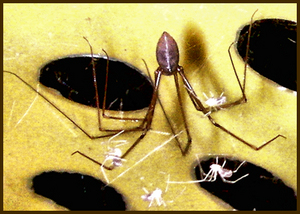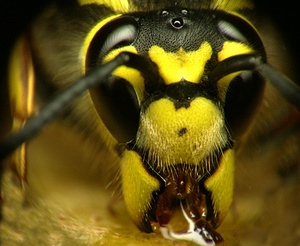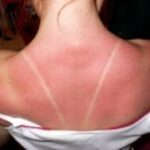Just like sunburn and dry skin, bug bites and stings are an inevitable part of life once the weather turns warm. Some bites and stings are relatively harmless and easy to treat while others may require some more intense care. If one of your family members is affected by a bug bite or sting this summer there are a number of simple soothing and treatment actions you can take depending on what type of insect you are dealing with.
Spider Bites:
Spiders are a nuisance all year long but are out in full force during the summer. Most spider bites are relatively harmless and in most cases the only knowledge you will have of being bit will be a red irritated area with a tiny bite mark in the center. For a bite that is only causing minor itching and tenderness, treat first by washing the area with soap and hot water. This will disinfect the area and help pull out some of the venom. Use ice or a cold compress on the area to help alleviate itching and immediate swelling. Optionally, for minor bites, you can also treat long term swelling by giving the bite victim a regular dose of ibuprofen and an antihistamine tablet. Monitor the person closely to make sure that allergic reactions do not occur as this could be a sign that you are dealing with a poisonous spider bite. If additional symptoms become a problem (rash, fever, excessive puss, etc.) it may be wise to seek immediate medical attention. Also, if you feel the initial bite take place, catch the spider (dead or alive) and place it in a closed container for identification if in the event an allergic reaction takes place later on.
Fly Bites:
While most types of flies are harmless, there are a few kinds that often prove to be a nuisance to humans. The yellow, black, deer and stable varieties of this winged insect are known for being particularly heinous. These types of flies mostly feed on rotting and decaying vegetation and animals but do require a certain a mount of human blood every few days to sustain their life and to feed their young. Due to the fact that these flies tend to be large, victims usually know when they have been bitten. The area affected will have a noticeable red welt surrounding a very small puncture. These bites tend to sting and can be particularly painful, they are however not typically dangerous to require medical attention unless the victim shows signs of serious allergic reaction. Treat the sting by washing gently with hot water and soap to prevent infection before using an over-the-counter antibiotic or itch relief cream. If the area is particularly swollen, use a cold compress to help alleviate pain and inflammation. In the event that the victim shows signs of infection or serious allergic reaction such as a rash or trouble breathing, seek immediate medical attention.
Bee Stings:
While they do a wonderful job pollinating our gardens and flower beds, bees are not always our friend. Bees will attack and sting when they feel threatened leaving behind a painful welt and usually a stinger. To treat a bee sting, sit the victim down and immediately find the location of the sting. Using your hand, tweezers or any other applicable tools you may have handy to remove the stinger and prevent further venom from entering the wound. If the person is allergic to bees, do not attempt to treat them. Seek immediate medical attention instead. If they are not allergic, you should then wash the wound with hot soap and water and use a cold compress to counter act inflammation. Localized itching on and around the sting is normal and can be controlled through the use of over-the-counter antihistamine medication and or a topical itch relief cream. As with any other type of bite, monitor the victim for slow developing sings of an adverse reaction. If you notice or experience severe itching, spreading redness, rash or shortness of breath it could be a slow reaction and may require medical care even if the victim may not normally be allergic to bees.
Mosquito Bites:
The most annoying pest of the summertime, mosquitoes come out full force when the weather gets warm. Though in rare cases mosquitoes have been known to carry diseases, most mosquito bites are medically harmless they are just moderately uncomfortable to deal with. Mosquito bites will look different from person to person depending on how a person’s skin reacts to the bite and how long the mosquito was allowed to feed before it was noticed. The large raised welts left by mosquitoes tend to itch, sometimes severely but will disappear after a couple of days. Do not scratch the bites if at all possible. Scratching tears skin which can lead to possible infections. To treat itchy mosquito bites try taking a hot shower to wash off dirt and irritants and use a topical anti-itch cream on the effected areas. For those whose skin reacts more adversely to the bites consider the use of an over-the-counter antihistamine to counter act swelling and irritation.
Fire Ant Bites:
Another summertime pest, the fire ant is an insect that is more commonly an issue for those living in the southeast regions of the US. Accidentally stepping on a fire ant bed will cause the insects to swarm to your body and ‘‹Å”attack’ by biting you. Though relatively small these ants pack a punch and their bite will cause a painful welt that will be accompanied by itching and slight swelling. Ants rarely attack alone and chances are if you were bitten once you were bitten several times until you could get the ants off of you and more than one bite to an area of the body will cause additional swelling. If you are allergic to ant venom, seek medical care immediately once you remove yourself from the area that the ants are located. To treat a fire ant bite, wash thoroughly with hot water and soap to clean the area and prevent infection. To reduce itching, put a small dab of antihistamine or anti-itch cream on each bite. If itching is severe, try soaking in a bath of Epsom salt to alleviate the itching for hours at a time. As the bites heal you will notice a tiny pustule will form over the top of the bite. Do your best not to scratch or pop this pustule because it can cause further infection to enter your skin; so just let it heal on its own. As with other bites and stings, monitor the victim closely for delayed signs of allergies.If at anytime you witness difficulty breathing, unexplainable sweating or a sudden paleness of skin, take the victim to the nearest hospital for treatment.
Bug bites and stings are a normal part of summer and as long as you are prepared to administer these easy treatments, bugs should not be a worry during your next outdoor adventure. It can be said however that prevention is the best treatment so try to use a Deet based bug spray during summer months if possible.







